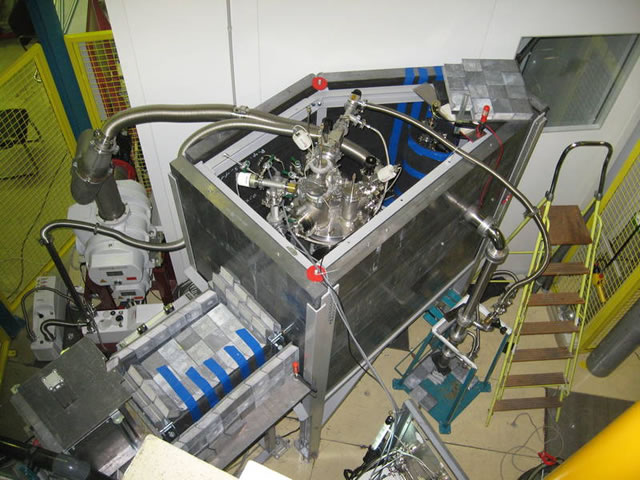Institut Laue-Langevin (ILL) has formulated a next-generation source to create ultra-cold neutrons (UCN). The company has produced the world’s first UCNs in Moscow through the PF2 source. Here, the movement of neutrons that pass through cold liquid deuterium is slowed down mechanically.
 Overall view on the UCN source: cold neutrons come from
the left and enter the cryostat situated behind its lead shielding.
Overall view on the UCN source: cold neutrons come from
the left and enter the cryostat situated behind its lead shielding.
These neutrons get reflected when they hit the blades of the turbine and thereby lose their energy. The neutrons can then be contained in a trap, which has a density of 10 UCN per cubic centimetre.
In the new source, neutrons are sent into helium-4-superfluid filled tank at a speed of 450 m/sec. When the neutrons enter the helium tank that has a temperature of less than 1 K, they cause vibrations and become ultra cold since they lose their kinetic energy. These ultra cold neutrons are then removed from the fluid using a short chimney or a cold valve. This method resulted in a density of 55 UCN per cubic centimetre. Scientists say that this figure can be further increased.
However, in spite of achieving a higher density, the flux of the new source is less than the existing PF2. Hence PF2 continues to provide UCNs to scientists and experimentalists all over the world. Since UCNs display various properties they are used in experiments either like a simple neutron ball or the structure of their waves are studied to provide a wide range of static properties. Due to these features UCNs are widely used in cosmology and in particle and fundamental physics.